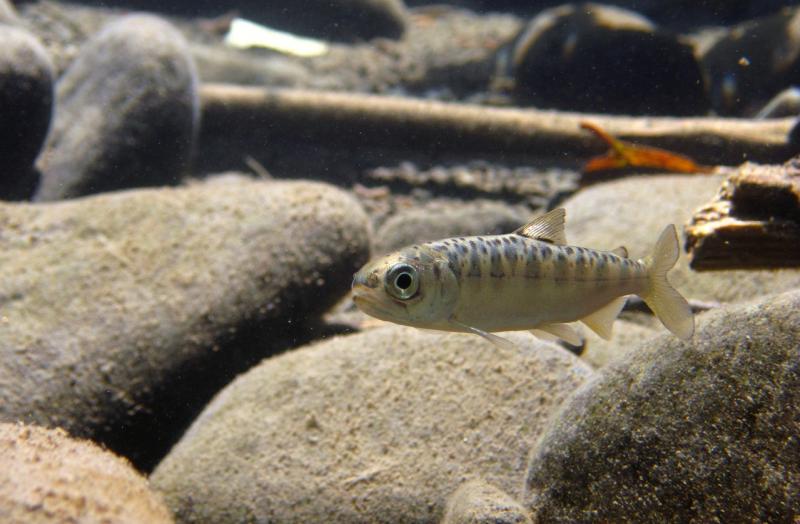“Watch your step, the ground is uneven here and I want to make sure we make it safely to the restoration area,” said Eli Asher, Senior Restoration Ecologist for the Cowlitz Tribe. He was hosting a group of NOAA Fisheries staff on Abernathy Creek, a tributary to the lower Columbia River, to showcase progress made by the Cowlitz Tribe since 2008 when it began a habitat restoration project in the watershed to support native salmon and steelhead.
Abernathy Creek is one of four watersheds in a complex of Intensively Monitored Watersheds (IMW), where biologists closely track the benefits restored habitat brings for fish. The effort is funded by NOAA Fisheries’ Pacific Coastal Salmon Recovery Fund. An IMW is an intensive watershed-scale research and monitoring effort focusing on a few locations across the state to evaluate whether restoration activities increase salmon and steelhead production.

Adding large wood and increasing complexity to the floodplain habitat provides important areas for fish to eat, rest, and reproduce. This complex and dynamic habitat has been destroyed by development, pollution, extreme weather, and other factors that have led to reduced fish populations.

The Cowlitz Tribe’s Abernathy Creek Habitat Restoration and Riparian Protection project aims to improve in-stream and riparian conditions for salmon species listed under the Endangered Species Act (ESA). Approximately 5,000 feet of stream is exposed rock with very little habitat diversity, such as plants or pools that provide refuge for fish.
The project installed woody debris to create roughness along the stream’s bank and creates areas where riparian vegetation can eventually establish, slowing down the movement of sediment and nutrients through the stream and improving collection of woody debris in future years. This initiates a positive feedback loop that is more resilient to environmental stressors.

To jump start the vegetation, the project also established riparian plants to provide food, shade, and healthy stream function that will support these fish.
The project will benefit all life stages of winter steelhead and fall-run Chinook, coho, and chum salmon by providing improved habitat for both newly hatched fry and for adults returning to spawn. “It’s amazing how much wood has been added to the site since restoration began,” remarked Amilee Wilson, Regional Tribal Coordinator for NOAA Fisheries’ West Coast Region.
Asher explained that the Tribe began the project in 2008 and completed the last installation of woody debris in 2012. A few years later, the Tribe is pleased to see how much accumulated woody debris is benefiting ESA-listed fish species by providing shade, cover, pools and increased prey such as insects. The Abernathy Creek project has helped protect 25 acres of land and restore two miles of stream habitat.
NOAA Fisheries funds and supports projects with tribal partners to conserve habitat and boost fish populations, recover threatened and endangered species, and support resilient river communities. Wilson coordinated with the Cowlitz Tribe to organize the tour for NOAA Fisheries West Coast Region staff to see the results of successful ongoing restoration.
While the active work is done, the Washington Department of Ecology and the Washington Department of Fish and Wildlife will continue to conduct a variety of physical and biological monitoring to determine the effectiveness of restoration activities at this site. They assess the habitat before and after the restoration, comparing the restored stretch with another “control” site where no work occurred.
Results of the Abernathy Creek project are promising. According to the Washington Department of Fish and Wildlife, the number of steelhead has increased from 26 adults in 2009 to 68 adults in 2018, reaching a high of 270 adults in 2015. Coho salmon have nearly reached their recovery goal of 300 spawning adults, with 215 returning in 2017. Monitoring is expected to continue for five years after implementation of the final stage of the restoration project in 2019.



